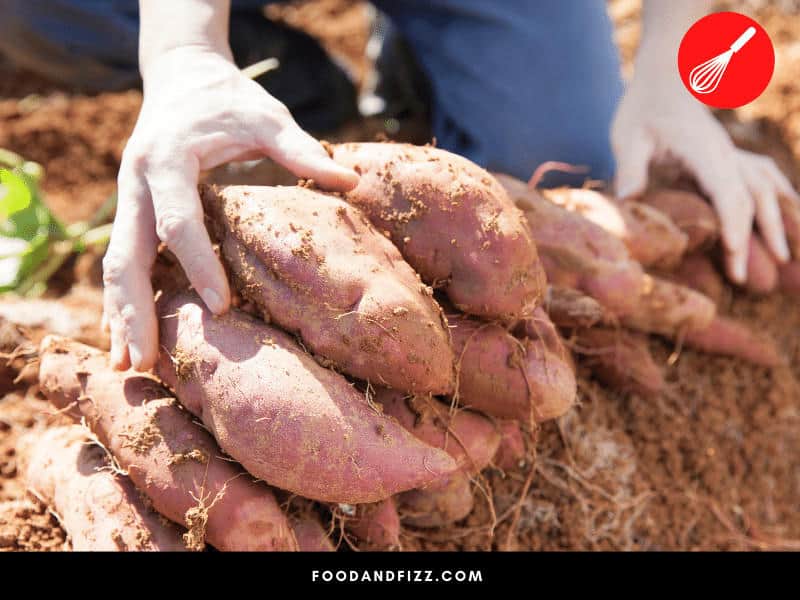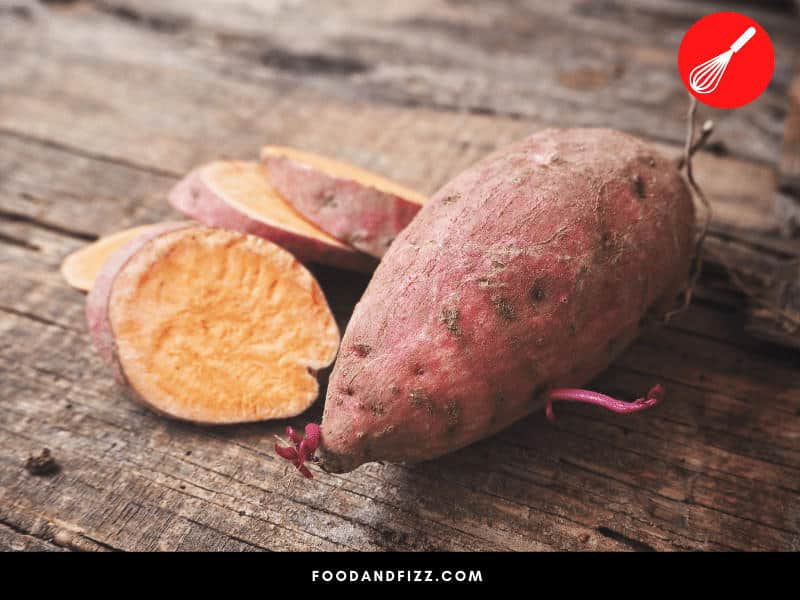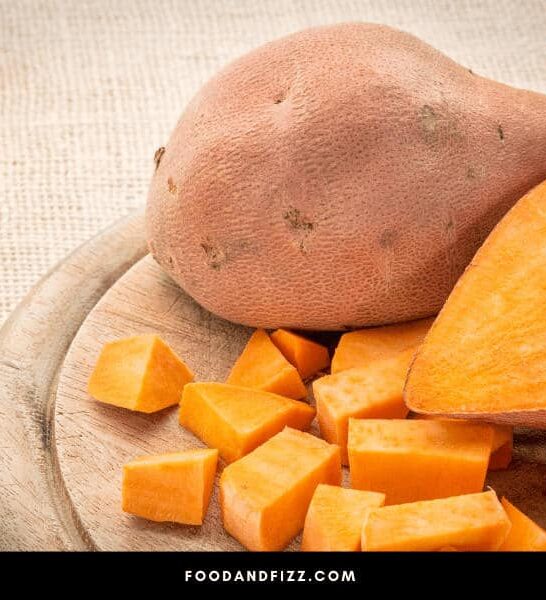Sweet potatoes are great sources of important nutrients and exciting flavors. Go ahead and use sweet potatoes if you want to whip up some tasty side dishes and healthy desserts.
Of course, making those delicious is only possible if you have good-quality sweet potatoes.
Are spongy sweet potatoes still suitable to be used in those dishes? Find out by going through the rest of this article.
Why Do My Sweet Potatoes Have a Spongy Texture?
Sweet potatoes become spongy or pithy for two main reasons. First, tiny holes may form on the flesh of the sweet potato if it is stored in an excessively hot space. The sweet potatoes may also become spongy if they were harvested too late. If sweet potatoes are harvested too late, they may already be in decline when they reach the market. Pithy sweet potatoes are safe to eat, but their flavor is less appealing.

Why Do Sweet Potatoes Become Spongy?
Part of the appeal of sweet potatoes is how versatile they are texturally.
You can boil the sweet potatoes to create some velvety smooth mash. After mashing up the sweet potatoes and adding some extra ingredients, you can also use them as filling for a pie.
Sweet potatoes can also be roasted and fried. When cooked that way, the sweet potatoes develop crisp outsides and fluffy insides.
Sweet potato is a versatile cooking ingredient. Or at least it is when it’s still in prime condition.
By the time you slice open your sweet potatoes, you may find that they have become spongy. You may find them riddled with small holes and flesh that is softer than normal.
Sweet potatoes in that condition are described as pithy. Let’s examine the reasons why sweet potatoes become pithy below.
1. Sweet Potatoes Become Pithy Due to Warm Temperatures
Extreme temperatures can cause issues for sweet potatoes.
You want to avoid storing sweet potatoes somewhere cold because their flesh may harden. The overly hard texture of the sweet potato is not pleasing to the palate.
Hot temperatures are arguably even worse for sweet potatoes. The warm temperatures can cause holes to form throughout the flesh of the sweet potato.
Those small holes help explain why the sweet potatoes have developed a spongy texture.

2. Sweet Potatoes Become Pithy Due to Late Harvesting
Growing your own sweet potatoes at home does not guarantee that your crops will all turn out great. If this is the first time you are harvesting sweet potatoes, one mistake can easily lead to them becoming pithy.
The mistake in question is waiting too long to harvest your sweet potatoes.
According to Almanac.com, sweet potatoes are ready to harvest when the leaves and the ends of their vines start to turn yellow. More often than not, sweet potatoes reach that point around the 100-day mark.
Be ready to harvest when you hit that milestone.
What happens if you wait too long to start harvesting? Well, you could miss the window when the sweet potatoes are in peak condition.
They won’t become spongy while they’re in the ground, but that may happen not long after delayed harvesting. Stay on top of your crops’ progress so you can harvest them at the best time possible.

Are Spongy Sweet Potatoes Safe to Eat?
Seeing that your sweet potatoes have become pithy is disappointing, but does that mean that you need to throw them away?
Spongy sweet potatoes are still edible. You can cook them any way you want, eat them, and not worry about getting sick.
However, you should know going in that sweet potatoes change once they become pithy.
Unsurprisingly, the texture of the sweet potatoes will be completely different. They may not crisp up as you expected even after you fry or roast them.
The texture is not the only issue with pithy sweet potatoes. The flavor of your sweet potatoes will also change after they go past their peak.
The new flavor isn’t terrible, but it’s not good either. You won’t get the same enjoyment out of eating those sweet potatoes that you typically do.

How Can You Stop Sweet Potatoes from Becoming Spongy?
Using pithy sweet potatoes in your dishes is not ideal. So, how can you prevent your sweet potatoes from becoming spongy?
The secret is storing them properly. Check out the steps detailed below so you can keep your sweet potatoes in peak condition.
1. Identify the Best Storage Area for Your Sweet Potatoes
Start by finding a spot inside your home where the sweet potatoes can be stored safely. Look for a spot where the air is a bit below room temperature.
The pantry is a good spot. Just make sure that your pantry seals up nicely so outside air and moisture will not be able to seep into it.
You can also use other spots inside your home as long as they are suitably cool and insulated from moisture.

2. Wrap the Sweet Potatoes
Once you’ve found the right place to store your sweet potatoes, you can start wrapping them. Wrapping the sweet potatoes gives them an additional layer of protection against extreme temperatures and moisture.
You can use torn pages of newspaper to wrap up your sweet potatoes. Cover them completely so they are well protected.
Wrapping the sweet potatoes individually will also optimize their protection.
3. Monitor the Sweet Potatoes
Lastly, you need to keep an eye on your sweet potatoes. Check on them periodically to see if they are still in good shape.
If you notice any moisture getting into the pantry, you should consider moving the sweet potatoes.
Conclusion to Why Do My Sweet Potatoes Have A Spongy Texture?
Sweet potatoes are delicious treats, but that changes once they become spongy. Use the tips detailed here so you can better preserve the quality of your sweet potatoes and continue creating delectable dishes with them.
Frequently Asked Questions about Why Are My Sweet Potatoes Spongy
How Long Will Sweet Potatoes Last if They Are Stored Properly?
Sweet potatoes that have been wrapped and stored in a secure pantry will remain in good condition for about two to three weeks.If the sweet potatoes have been cut, you need to keep them in the refrigerator inside an airtight container. Those sweet potatoes can stay in your refrigerator for about a week.
How Should You Cook Spongy Sweet Potatoes?
Make the most out of spongy sweet potatoes by boiling and mashing them. By preparing them that way, you can minimize the impact of their unusual texture.

